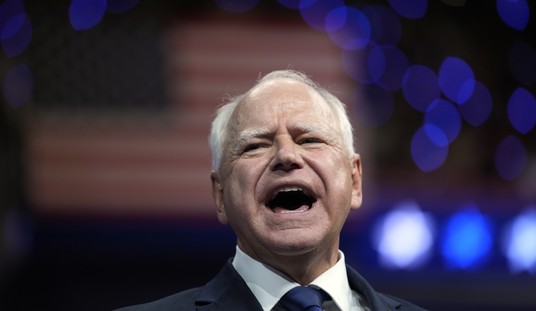I can’t even anymore.
Please read the Washington Post explain, with one program, every single thing that is wrong with putting the federal government in charge of things. A program that doesn’t now, and probably never, accomplished its initial goal? Check. An expenditure that should have been deemed unnecessary circa 1930 but has nonetheless stuck around beyond the lifespan of most of the Greatest Generation? Check. A function that never had any business being under the purview of the federal government instead of the private sector? Check. A program that has risen, zombie-style from its grave every time someone tries to kill it? Check. A service that crowded out private sector replacements with below-market rates subsidized by taxpayers and then justified its continued existence by complaining the private sector had not jumped to replace it at a loss? Check.
The Federal Helium Program. I could not write a more devastating, achingly elegant example of stupidity if I tried.
President Ronald Reagan tried to get rid of it. So did President Bill Clinton. This October, their wish is finally set to come true.
The Federal Helium Program — leftover from the age of zeppelins and an infamous symbol of Washington’s inability to cut what it no longer needs — will be terminated.
Unless it isn’t.
On Friday, in fact, the House is planning a vote to keep it alive.
“Many people don’t believe that the federal government should be in the helium business. And I would agree,” Rep. Doc Hastings (R-Wash.) said on the House floor Thursday.
But at that very moment, Hastings was urging his colleagues to keep the government in the helium business for a little while longer. “We must recognize the realities of our current situation,” he said.
You’re probably thinking, “Yeah, why is the federal government in the helium business?”
The program at the center of this debate has its origins after World War I, in a kind of arms race that sounds ridiculous now. In Europe, countries such as Germany were building sturdy, if slow, inflatable airships. The U.S. military was worried about a blimp gap.
So Congress ordered a stockpile of helium to help American dirigibles catch up. It was assumed to be a temporary arrangement.
“As soon as private companies produce [helium], the government will, perhaps, withdraw?” asked Rep. Don Colton (R-Utah.) in the House debate.
“That is correct,” said Rep. Fritz Lanham (D-Tex.).
That was 1925.
Today, 88 years later, the zeppelin threat is over. Private companies have learned to produce helium. But the U.S. government still has its own reserve: a giant porous rock formation under the Texas Panhandle, whose crannies hold enough helium to fill 33 billion party balloons.
The reserve sells off portions of its helium every year, accounting for about 42 percent of the U.S. supply of the unrefined gas. The program, with 52 employees, pays for itself with proceeds from the sales.
But since the 1980s, politicians have been saying this shouldn’t be the government’s job. Reagan said so in his 1988 budget. Clinton said so in his 1995 State of the Union speech.
Timely stuff. So, Congress has tried to kill it at least twice. The euthanization attempts were bipartisan, by Presidents Reagan and Clinton, and the program is now clinging to life after a 1996 bill required it to wind down after paying off “a more than $1 billion debt to other agencies.” (I love how even small federal agencies that allegedly “pay for [themselves] with proceeds from the sales” manage to rack up $1 billion debts.) Now it has paid that debt, but oh noes! The private sector has not stepped into the market to cover the 40 percent of helium provided by the federal government. Why might that be, pray tell?
Congress says private industry simply didn’t step up to supply more helium, in part because the federal government was selling its helium so cheaply. In industry, it’s said that there has been a spike in demand for helium, and that finding new supplies isn’t easy. That requires drilling in a certain kind of natural gas field, where helium comes up along with the gas.
Emphasis mine. Only the federal government could possibly pile up $1 billion in debt selling 40 percent of the market share of a valuable commodity that many people want and need. Only the federal government could survive selling said commodity under market value by subsidizing it with other people’s money and then scratch its head wondering why no one else had jumped into the game. “Why is no one playing this delightful game of Three Card Monty with us?”
Oh, but we have not yet gotten to the impassioned floor speeches on behalf of this travesty. Hold on tight, y’all. I know you’re determined, but like an overly confident bachelorette on her third appletini, you are in danger of getting bucked by the mechanical bull in this wild, wild rodeo of idiocy.
Imagine a world without balloons, people. Imagine a world in which Carrot Top cannot call upon this natural resource to reach the comedic heights to which we’ve become accustomed. A Congressman of these United States actually thinks we cannot possibly inflate balloons or make funny voices without the federal government, even though it is demonstrably bad at owning and operating the current reserves and the country has other helium sources. Call me crazy, but if the federal government exited the helium market tomorrow, I have a feeling the forces that have brought us Google Glass, the decadence of the baby wipe warmer, and the ability to stream “The Grinch Who Stole Christmas” literally any season of the year could figure out how to get this country’s Sponge Bob balloons flying high once again in a beautiful mylar pageant of Kroger-bought approbation.
But I’m an optimist. I close with Barney Frank, proving that there should be no ideology that can deny or defend the stupidity of this endeavor, with which we will no doubt continue indefinitely.
“If we cannot at this point dispense with the helium reserve — the purpose of which is no longer valid — then we cannot undo anything,” then-Rep. Barney Frank (D-Mass.) said back in 1996, when Congress thought it finally killed the program.
Sigh.








Join the conversation as a VIP Member